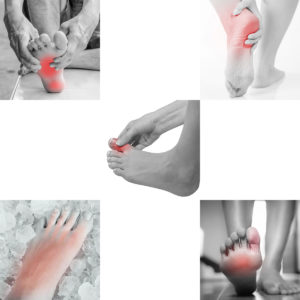
When I am assessing a myofascial issue for someone, I come at it from several angles. You should too!
This does not replace the assessment and treatment by a professional but it is a good start for many of the routine chronic pain problems we may develop.
First, compare the pain pattern with authoritative trigger point referral diagrams. However, you might find two or three that overlap. Sometimes, you may have more than one area of pain.
Then, your other symptoms and medical history you helps put your pain in context.
Next, take a look at your posture in a general way, looking for certain things about how you might be holding yourself.
In addition, do some simple range of motion tests help confirm or deny the ideas you have so far about what muscles are involved.
If you are a therapist, you can go through the same process with your patients. If you are a patient, you can use this approach as a basic self-care framework.
Finally, perform some treatment – perhaps some compressions, or a particular stretch – hoping to improve the symptoms…
…and then assess things again.
Sorting Out Foot Pain – Trigger Point Activations
Trigger Point Referrals As Symptoms
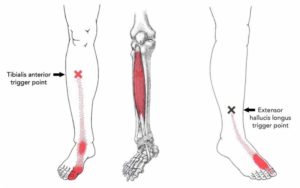
When sorting out foot pain, stop to consider where your own pain is. You might even want to draw it. Pay more attention to the location and how it radiates than how good your art skills are. Knowing the location accurately is important. You might need someone else to look at where you say it hurts other than where you draw it. We often have especially poor visualization of where our our pain is on the back side of the torso.
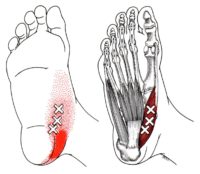 Next, we take a look at referral patterns for that part of the body. These usually show an outline of the muscle with a referral pattern, typically in red, spread over that muscle and extending around it.
Next, we take a look at referral patterns for that part of the body. These usually show an outline of the muscle with a referral pattern, typically in red, spread over that muscle and extending around it.
Sometimes, there is more than one referral pattern that seems to match your pain. Let’s suppose you have pain on the top of your big toe. We’ve got at least three muscles to choose from right? Your long big toe flexor, your long big toe extensor and your tibialis anterior (TibA).
 However, take a closer look, the pattern of the toe flexors and extensors is a little different. The flexor refers more to the bottom of the big toe so that’s probably out. The extensor refers more to the top – but so does TibA…
However, take a closer look, the pattern of the toe flexors and extensors is a little different. The flexor refers more to the bottom of the big toe so that’s probably out. The extensor refers more to the top – but so does TibA…
In that case, we’re going to need to look more closely at some other aspects of these muscles.
Trigger Point Activations As Medical History
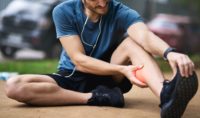
However, this is good information that we can use to help narrow our search. We typically have a detailed conversation about your medical history and what led up to the current issue. We can compare this with what we know about the most likely muscle suspects.
Let’s say that part of your recent history includes more driving that usual. Interesting, because we know that prolonged plantar flexion (pointing your toes/foot) can activate the toe extensors but Sounds like they have just moved up to the top of the list, but that also can activate TibA. Hmmm….
However, you also walk around town quite a bit and recently, the sidewalks on your daily route are torn up. You’ve been walking in the street and even on rough ground when you need to. Well, that sounds like one of the ways the TibA gets activated but it doesn’t tend to aggravate the toe extensors as much.
Sounds like TibA, but we still need to confirm our suspicion with some simple tests.
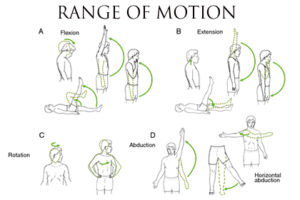
Range of motion testing comings with its own complexity, but the basics are simple. If I think there is a problem with your TibA, we need to know something about what a healthy TibA does. Assuming that we know what the action and range of motion associated with this muscle is, we can check it.
TibA primarily inverts your foot and ankle. It does other things too, like plantar flexion and dorsiflexion, but inversion is the most important action, and most unique to this muscle. So we check it. First, I would explore the “soft end” of range of motion, carefully trying to find the “hard end” of the range of motion.
In most cases, range of motion testing isn’t a first step. It is often a tool that we use to confirm something we already suspect. As we will see, it can also be part of how we treat the muscle.
Confirming Your Assessment Using Treatment
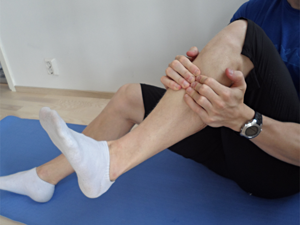
Self Compressions are to treat a muscle and prepare it for movement throughout its range of motion. However, trigger points are painful. So, if we find find a particularly sore spot, we can compare this with the referral patterns we know about. This is another way to confirm or deny our muscle suspect.
If we suspect that our big toe pain is caused by TibA we would expect that compressions of our shin might reveal some tender trigger points. In this example I would probably recommend a tool like a Tiger Tail roller to access this muscle. Using the finger tips for any significant amount of compression is not a good idea.
But if we thought the problem might be caused by the long toe extensor, we’ve got a challenge. It’s trigger point is actually in the same place, but UNDERNEATH the TibA. But it is also a little lower, so we can probably sort out the two spots.
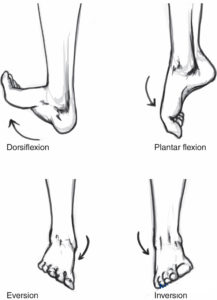
That means that we don’t use the muscle to move it. Either someone does it for you or you use props to minimize active use of the muscle. However, we dont’ just stretch it. We also shorten the muscle. Unhappy muscles often cramp or hurt when we shorten them.
We’re still thinking we might have problem with our TibA. So we want to both plantar flex and dorsiflex the ankle. More important, we want to both evert and invert the ankle – flexing it side to side.
This type of shortening and stretching tells us the most, and and usually most effective, when we do it passively.
 As we discussed previously, in myofascial treatment, we usually passively run the muscles we’re working on through their full range of motion. That means that we don’t use the muscle to move it. Either someone does it for you or you use props to minimize active use of the muscle. However, we dont’ just stretch it. We also shorten the muscle. Unhappy muscles often cramp or hurt when we shorten them.
As we discussed previously, in myofascial treatment, we usually passively run the muscles we’re working on through their full range of motion. That means that we don’t use the muscle to move it. Either someone does it for you or you use props to minimize active use of the muscle. However, we dont’ just stretch it. We also shorten the muscle. Unhappy muscles often cramp or hurt when we shorten them.
We’re still thinking we might have problem with our TibA. So we want to both plantar flex and dorsiflex the ankle. More important, we want to both evert and invert the ankle – flexing it side to side.
This type of shortening and stretching tells us the most, and and usually most effective, when we do it passively.
Most of the general recommendations for sorting out foot pain are good advice for everyone.
For instance, we’d like to see everyone in sensible shoes. We’d like to see moderate, reasonable activity. We try to help everyone make changes to sitting, working, driving and sleeping positions. This minimizes overloading muscles that can cause chronic pain.
However, most of this advice is common to many foot problems and may not help confirm your assessment.
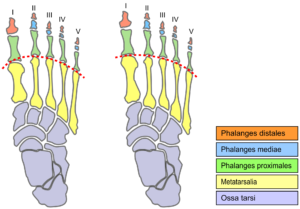
This means that your first metatarsal (the bone behind your big toe) is relatively short. Morton’s Foot Structure changes the way your foot is supported. Therefore, it can contribute to myofascial pain and dysfunction by increasing overload on key muscles. Usually, we provide a simple correction with a posture control insert and checking in a week or two for improvement.
